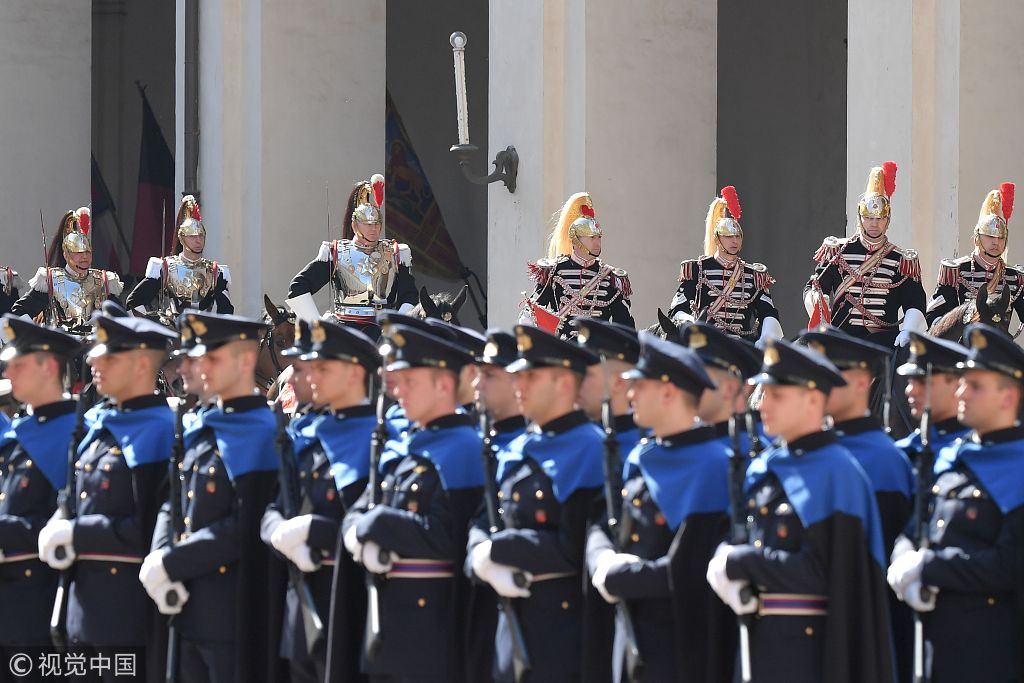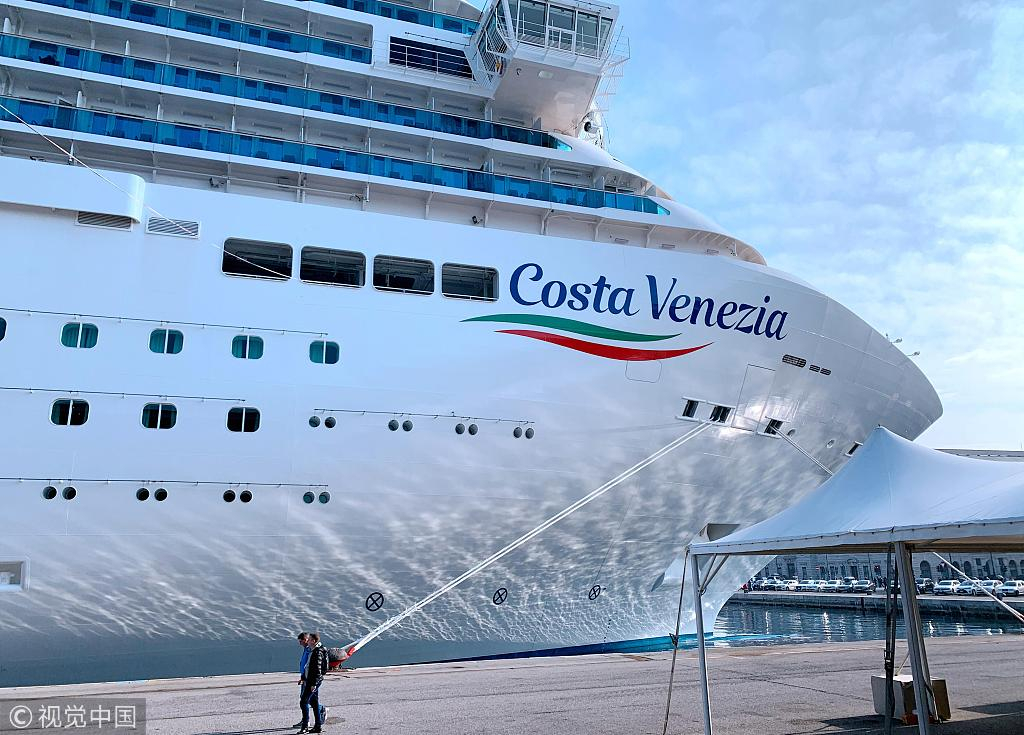
Opinion
13:06, 24-Mar-2019
Italy's national realities determine BRI is its inevitable choice
Luo Hongbo

Editor's Note: Luo Hongbo is a senior research fellow at the Institute of European Studies at the Chinese Academy of Social Sciences. The article reflects the author's opinions and not necessarily views of CGTN.
China and Italy signed a memorandum of understanding on cooperation within the framework of the Belt and Road Initiative (BRI) on Saturday, making Italy the first G7 country to join the BRI.
Time-honored relations
Although Beijing and Rome are far apart geographically, their relations have lasted for a long time. As early as the end of the 2nd century BC, China's silk was transported to Italy via the overland roads.
The ancient Silk Road became an important trade route connecting Asia and Europe and was a bridge to promote the convergence of eastern and western cultures. At that time, Italy, a developed economy and the core of Western culture, was where multiple ancient silk roads met in the West.
The two symbolic European figures who came to China through the ancient Silk Road and played a vital role in Europe's understanding of China were both from Italy – Marco Polo and Matteo Ricci. Marco Polo stayed in China for 17 years and his Travels of Marco Polo aroused Europeans' enthusiasm for the East.
Matteo Ricci lived in China during the Ming Dynasty for a longer period of 28 years. He was good at Mandarin, befriended local Chinese and knew more profoundly about the social atmosphere and people in China.

Portrait of Matteo Ricci /VCG Photo
Portrait of Matteo Ricci /VCG Photo
He chronicled his personal experience and sent it back to Italy through letters. In doing this, he presented a real China to the West, bringing European and Chinese civilizations closer. Italy's ideology and culture also had a profound influence on contemporary Chinese politicians and philosophers.
Liang Qichao, a pioneer of the modern Chinese reform movement, compiled the Chinese-language biographies of 19th-century famous Italian statesmen Cavour, Mazzini, and Garibaldi, introducing the Renaissance to the Chinese people and believing that the Renaissance movement had served as a source of inspiration for China's rejuvenation and modernization.
This shows that historical civilization and human intelligence have always been featured in the exchanges between China and Italy, making the relationship between the two ancient civilizations in the world unique and unparalleled.
The ancient Silk Road has left an indelible mark in human history. Its significance lies not only in promoting the circulation of goods but also in generating wonderful sparks between Chinese and Western cultures, which have brought prosperity to the economy and culture of both sides.
"Friendly exchanges and common prosperity" reflect the time-honored spirit of the Silk Road. By following this spirit, we can make the right strategic decisions today.
Foundation of Modern Relations
The China-Italy comprehensive strategic partnership is entering the 15th year in 2019. The two countries will celebrate the 50th anniversary of the establishment of diplomatic relations in 2020.
For Italy, joining the Belt and Road Initiative will push Sino-Italian bilateral economic and trade relations to a new level.
Despite differences in political systems, history, culture, and socioeconomic development, the two countries have realized the strategic and cultural significance of developing bilateral relations. Such efforts have laid a solid foundation for the continuous improvement of bilateral relations over the past 49 years.

Horse Guards and soldiers take the position for the arrival of Chinese President Xi Jinping at the Quirinale presidential palace in Rome, Italy, March 22, 2019. /VCG Photo
Horse Guards and soldiers take the position for the arrival of Chinese President Xi Jinping at the Quirinale presidential palace in Rome, Italy, March 22, 2019. /VCG Photo
Since the establishment of the comprehensive strategic partnership between the two countries in 2004, the political mutual trust between the two countries has deepened and strategic consensus has been reached on major issues.
Trade between the two countries has grown rapidly and economic cooperation has been carried out across the spectrum. In 2017, Sino-Italian import and export trade volume reached 49.6 billion U.S. dollars, 490 times higher than that in 1970 when the two countries established diplomatic relations, and 80 times higher than that in 1979, the second year of China's reform and opening-up.
Italy was China's fifth largest trading partner, the fourth largest export market and fourth largest source of imports in the EU in 2017. This momentum of development will continue in 2018.
China is Italy's largest trading partner in Asia. Investment has changed from a one-way street to two-way. By the end of April 2018, Italy invested in 5,889 projects in China, with the actual amount of investment totaling 7.15 billion U.S. dollars.
In 2017 alone, Italy invested in 201 new projects in China, with an actual investment of 190 million U.S. dollars. From 2000 to 2017, China's investment in Italy totaled 13.7 billion euros, and Italy became China's third largest investment destination in the EU.
At present, there are more than 600 Chinese enterprises in Italy, with a turnover of around 18 billion euros and more than 30,000 employees.

An Italian cruise ship, to be exported to the Chinese market, is waiting for its first voyage at an Italian port, March 2, 2019. /VCG Photo
An Italian cruise ship, to be exported to the Chinese market, is waiting for its first voyage at an Italian port, March 2, 2019. /VCG Photo
According to the "Action Plan for Strengthening Cooperation in Economy, Trade, Culture and Science and Technology (2017-2020)" signed by the two governments, the two sides confirmed that priority should be given to cooperation in the fields of environment and renewable energy, agriculture, sustainable urbanization, healthcare, aviation, space science and its applications, infrastructure and transportation.
The depth and breadth of cooperation between the two countries are increasing; the objectives of cooperation are becoming clearer; the achievements are becoming greater. All these have laid a solid foundation for the joint construction of the Belt and Road by China and Italy.
Future Outlook
Against the backdrop of global economic slowdown in recent years, Italy is right to regard the BRI as an opportunity to gain new growth momentum.
Economic strength is crucial to the survival and development of a country, but Italy's economy has been performing poorly in recent years. Since the 2008 global financial crisis, Italy's economic growth has been below the average level of the euro area. Meanwhile, Italy's usual means of boosting the economy – the devaluation of the lira and the expansion of public spending – have all failed.
Expanding foreign relations is Italy's only solution. Scarce resources and limited domestic market mean that export-processing is the lifeline of Italy's economic development. The BRI will enable Eurasia to develop new production and consumption patterns. Italy needs to understand and participate in it urgently in order to gain more opportunities and benefits.
This urgency is also evident from the Italian government's consistent attitude toward the BRI. In 2017, then Italian prime minister Paolo Gentiloni led a delegation to attend the first Belt and Road Forum for International Cooperation in Beijing. In summary, Italy's national realities determine that participation in the BRI is an inevitable choice of the country.
(If you want to contribute and have specific expertise, please contact us at opinions@cgtn.com.)

SITEMAP
Copyright © 2018 CGTN. Beijing ICP prepared NO.16065310-3
Copyright © 2018 CGTN. Beijing ICP prepared NO.16065310-3